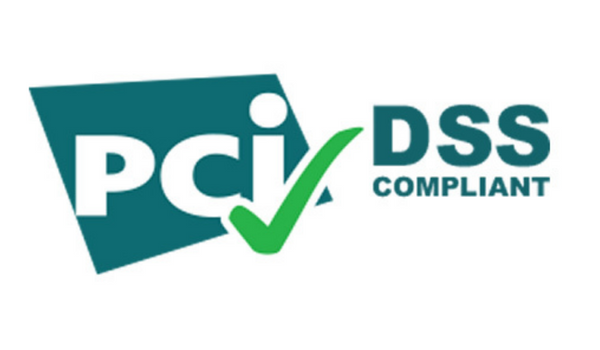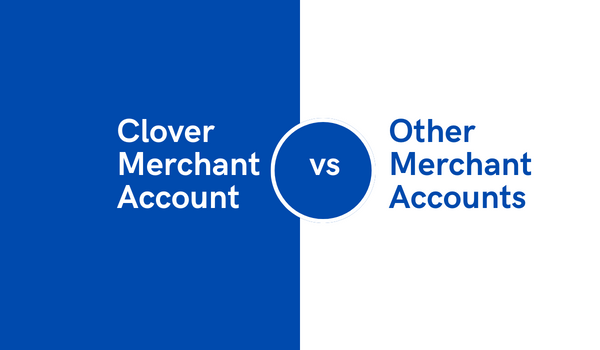
What is Clover security PCI compliance fee?
The Clover security PCI Compliance fee is assessed by clover. It is a cost induced by the Payment Card Industry Data Security Standards Council onto credit card processing service providers and sales organizations. It is also defined as “Clover security PCI DSS Compliance Fee.”
Clover security PCI compliance fee helps to cover the costs of maintaining a secure payment processing system.
Why Clover security PCI compliance fee?
PCI compliance
PCI compliance is a set of rules that keep cardholders' information safe and out of the wrong hands.
In detail, Payment card industry(PCI) Compliance is mandated by credit card companies to ensure the security of credit card transactions as well as cardholders' data like card number, cardholder’s name, expiry date of the card, etc.,
PCI compliance standards require the merchant and all businesses to handle credit card information securely. This helps to reduce the likelihood that cardholders would have sensitive financial account information stolen. If merchants do not handle credit card information according to PCI security standards, the card information should be hacked and used for many fraudulent actions.
How to become a PCI complaint?
- Being PCI compliant means consistently adhering to the guidelines set forth by the PCI standards council (PCI SSC) and the organization formed in 2006 to manage the security of credit cards. The requirements developed by the council are known as the payment card industry data security standards (PCI DSS).
- PCI DSS consists of 6 control objectives, 12 key requirements, 78 base requirements, and more than 400 test procedures.
- PCI DSS is clustered into six related control objectives to protect the cardholders' account data.
These control objectives are designed to provide context for each requirement and are as follows.
1. Maintain and build a secure network system
Requirement 1 – restricting network traffic
Requirement 1 contains controls for restricting network traffic, which is at the very core of a secure network. Controls like justifying the firewall rules and anti-IP spoofing defaulting all settings, specifically authorizing inbound and outbound traffic.
Requirement 2- secure configuration of devices
In essence, this requirement is all about ensuring that devices other than a firewall and configured devices such as servers, desktops, laptops, and mobile and the controls securely are similar to requirement 1 that they focus on secure configuration standards and ensuring devices only have functionality that is required for their use.
2. Protect cardholder data
Requirement 3 – protect stored data
Requirement 3 includes a large number of controls and how should encrypt controller data when it’s stored. Due to the nature of encryption technology, this is a complex requirement.
Requirement 4 – Secure data in transit
Requirement 4 includes controls designed to protect cardholder data while it’s being transmitted. Including controls such as always using strong cryptography, always securing wireless networks, and restricting the technologies used to transmit the cardholder data to a minimum.
3. Maintain a vulnerability management program
Requirement 5 – Anti-malware
Requirement 5 is entitled to protect all systems against malware and regularly update antivirus software which doesn’t leave much to the imagination. It includes controls focused on deploying, using, and maintaining anti-malware wherever.
Requirement 6 – patch management and secure software development
Requirement 6 focuses on two areas. It provides controls on the frequency of patching and on securely developing software.
4. Implement strong access control measures
Requirement 7 – Administrative access contro
Requirement 7 is all about the administrative side of access control. It contains around clearly defines who has access to what using best practices and commonly used principles like need to know and least privilege.
Requirement 8 – Technical access controls
Requirement 8 focuses on the technical side of access control and includes many controls designed to restrict users' access, such as password length and complexity, multi-factor authentication, no shared accounts, accountability, and traceability of users' actions.
Requirement 9 – Physical access controls
Requirement 9 focuses on restricting physical access to cardholder data precisely controls such as facility entry controls, visitor procedures, and controlling access to physical media such as USB drives and paper records.
5. Regularly monitor and test networks
Requirement 10 – Collecting and monitoring logs
Requirement 10 is probably the most difficult as it involves collecting and monitoring logs from all devices in scope. All these logs must be stored and analyzed, and security events must be alerted and followed up with an incident management process.
Requirement 11 – Vulnerability scans and penetration tests
Requirement 11 is resource intensive as required to perform regular vulnerability scanning and penetration testing either by qualifying in-house staff or external parties. It involves a lot of budgeting and planning and includes control such as intrusion dissection or intrusion prevention systems and change detection systems.
6. Maintain an information security policy
Requirement 12 – Policy and procedure documentation
Requirement 12 covers all the Policy and procedure documentation required, including annual risk assessments, security awareness training party due diligence, and insulin response plans.
What are the levels of Clover security PCI compliance fee?
The above requirements do not apply universally. Clover has several PCI compliance levels depending on the transactions handled each year.
Level 1: Merchants process more than 6 million card transactions annually.
Level 2: Merchants process between 1 million to 6 million card transactions annually.
Level 3: Merchants process from 20,000 to 1 million card transactions annually.
Level 4: Merchants process less than 20,000 card transactions annually.
What are the penalties for non-compliance?
PCI DSS is a standard, not a law. It’s executed through contracts between merchants acquiring banks and payment brands. Each payment brand confines acquiring banks for PCI DSS compliance violations, and acquiring banks can withdraw the ability to accept card payments from non-compliant merchants.
All service provider has a right to set penalty fee on their own.
How can businesses reduce their PCI compliance fee?
- Network Segmentation
- Install updates
- Tokenization
- Point-to-Point-Encryption (P2PE) or End-to-End Encryption (E2EE)
- Outsource compliance to the experts
Conclusion
All businesses are responsible for security PCI compliance fee is lower than the noncompliance fee. Organizations are compulsorily aware of PCI compliance to avoid financial penalties and to ensure. The clover security PCI compliance fee is lower than the noncompliance fee. The safety of customers’ information is always here to help.






